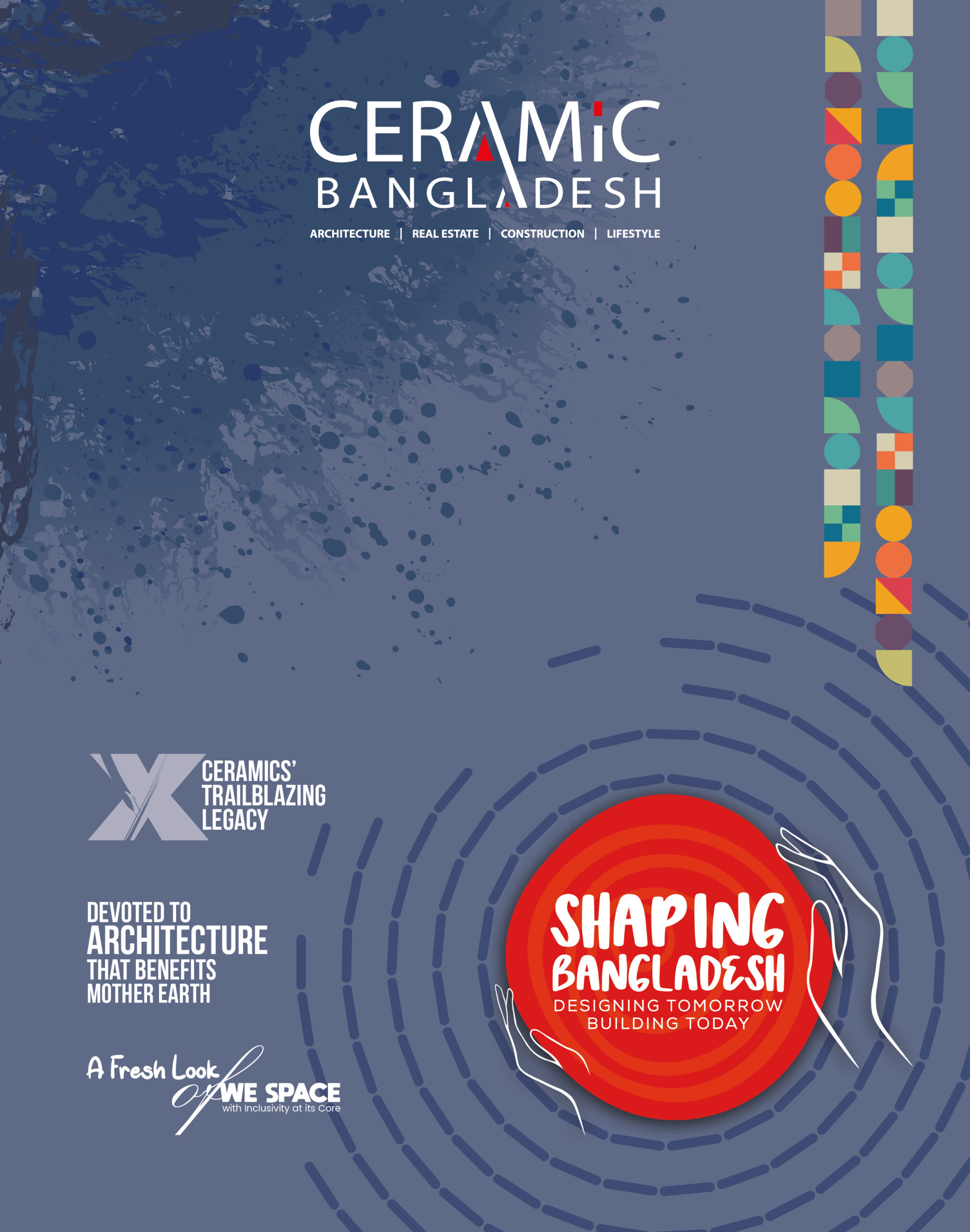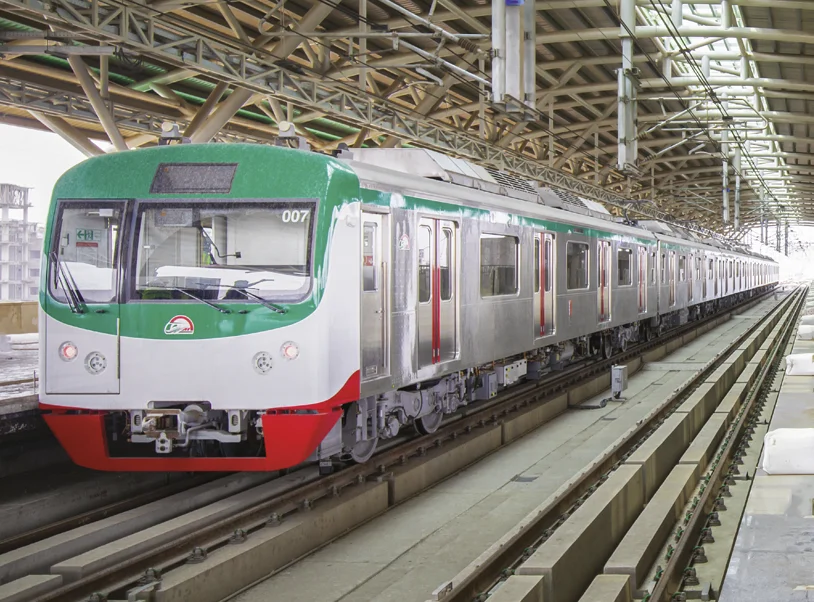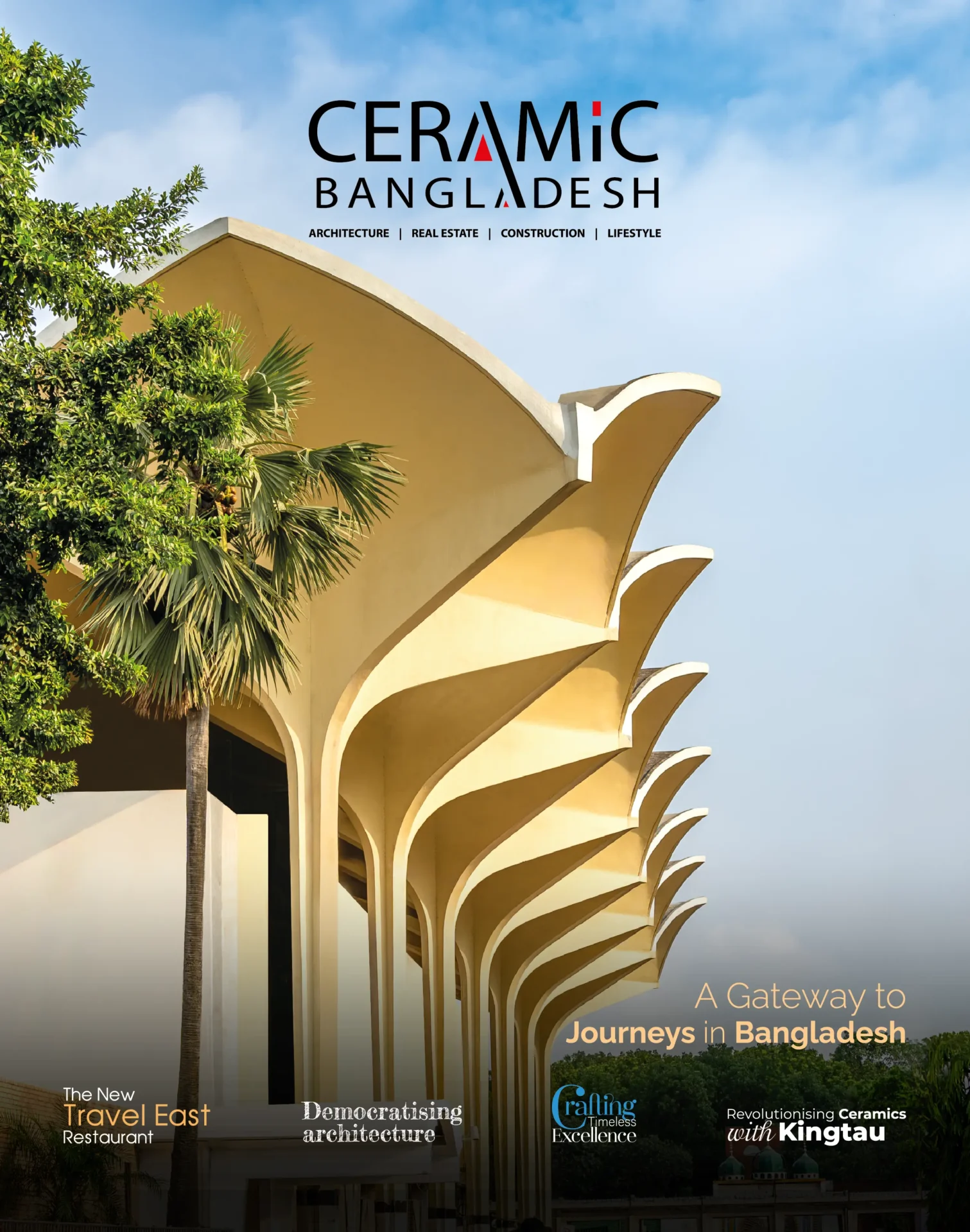

The First Dhaka Elevated Expressway (FDEE) is called a ‘new milestone’ in communications and the project is being implemented under Public-Private Partnership (PPP) arrangement to alleviate traffic congestion in and around the capital. It has already been visible after inauguration of a portion of total of 46.73-kilometre-length with ramps, including a main elevated section spanning 19.73 km in the city. Prime Minister Sheikh Hasina inaugurated the 11.5 km part of it between Hazrat Shahjalal International Airport and Farmgate section, on September 2 with the key objective to shorten the lead time for exports and imports activities. Now people can travel the Airport-Farmgate site in 10 minutes thanks to the FDEE inauguration in the densely populated city. It often takes two hours to travel the 11.5 km due to severe traffic congestion. According to the First Dhaka Elevated Expressway Company Ltd, the total of 46.73-km-long elevated expressway is covering Airport, Kawla, Kuril, Banani, Mohakhali, Tejgaon, Magbazar, Kamalapur, Sayedabad, Jatrabari to Kutubkhali on the Dhaka-Chattogram highway. The entire expressway is expected to be opened for vehicles from Tejgaon to KutubKhali in June 2024. The FDEE project involves construction of a four-lane main carriageway and one elevated link road, comprising: four-lane dual main carriageway of a total length of 19.73 kilometers. It has a four-lane dual link-road carriageway of a total length of 3.1 kilometers. 32 on-off ramps including 16 on-ramps and 16 off-ramps (one-lane carriageway of 5.5 meter width) of a total length of 23.9 kilometers with 8 toll plazas and 43 toll collection booths. Besides the main four-lane dual carriageway and two suspended termini at its ends, it has five interchanges, two elevated links. The approximate total length of the main carriageway Expressway is about 46.73 km including 19.73 km main flyover and 31 km ramps and elevated links. Dhaka-Ashulia, Dhaka-Narayanganj and Dhaka-Chittagong expressways will also be connected with this elevated expressway in future. The project is one of the largest infrastructure projects taken up by the incumbent government spending a total of Tk 13,858 crore to ease traffic congestion. Of them, the cost of Airport-Farmgate section was Tk 8,940 crore. However, the FDEE project is being implemented under the PPP process between the government of Bangladesh, represented by the Bangladesh Bridge Authority (BBA), and the Italian-Thai Development Company Limited (ITD Group), represented by the First Dhaka Elevated Expressway (FDEE) Co. Ltd. According to the authority, around 80,000 vehicles can run on the FDEE a day. Chinese firm China Shandong International Economic and Technical Corporation, one of the three private partners of the PPP project, will operate the control centre. The FDEE is offlimits to three-wheelers and motorcycles. Other vehicles run on the structure at a maximum speed of 60km per hour in expressway and 40km per hour in ramps at the beginning. BRTC bus services commenced on the Expressway. The non-stop service, which began initially, runs with eight double-decker buses from Farmgate to the Airport. Road Transport and Highways authority said cars, SUVs, microbuses with fewer than 16 seats, and trucks with a capacity of less than three tonnes will pay Tk 80 for using the expressway. Trucks with six wheels will pay Tk 320, those with more than six wheels Tk 400, and buses with 16 or more seats Tk 160. Payment is being processed through e-ticketing. Local construction industries are thriving At least 10 local companies are making and supplying materials, such as cement, steel, stone and paint, for constructing the country’s first elevated expressway. Local products in place of imported alternatives are also being used in this mega project. This is not only saving foreign currency but also building the capacity of the local companies. A major portion of the Tk 8,940 crore project is being constructed using local materials. Of the 10 local contributors, six are cement companies while two are steel makers and the others make paint and PVC products. The cement makers are: Shah Cement, Crown Cement, Bashundhara Industrial Complex, Heidelberg Cement, Seven Rings Cement and Premier Cement. The BSRM and GPH Ispat are providing steel for the project while two concerns of RFL Group — RFL Pipe and Fittings, and Rainbow Paints — are supplying necessary pipes and road marking materials. RN Paul, managing director of RFL Group, said they are providing waste and rainwater pipes and fittings for the drainage system of the elevated expressway as well as road marking materials. Mr Paul explained that if local companies do not provide the required construction materials, then they would have to be imported at the cost of huge sums of foreign currency. “So, local companies benefited and also the process helped save foreign currency through such cooperation,” he said. Till September 2023, a total of 66,000 tonnes of steel has been used in the elevated expressway project, with BSRM contributing a majority 52,000 tonnes (80%). Tapan Sengupta, deputy managing director of BSRM, acknowledged that involvement in this type of large project helps local construction material companies grow their capacity and achieve global standards. Sheikh Masadul Alam Masud, founder chairman of the Bangladesh Steel Manufacturers Association, said the local steelmaking capacity has nearly doubled to about 9 million tonnes over the past decade. Local cement manufacturers have increased their production capacity to 6 million tonnes per annum while it was 2 million tonnes annually just 10 years ago. Back to history In January 2011, the certificate authority (CA) was signed between Bangladesh government, represented by Bridges Division, the Ministry of Road Transport and Bridges, acted through Bangladesh Bridge Authority (together the “grantor”), and First Dhaka Elevated Expressway (FDEE) company limited (the “concessionaire”). The ITD, the largest construction company in Thailand, established first Dhaka Elevated Expressway Company Limited (“FDEE”) as a 100%-owned special purpose vehicle, registered in Bangladesh, to accede ITD as the concessionaire in the concession agreement for implementation of the project. The BBA signed deal with Italian-Thai Development Public Company to build the FDEE at a cost of Tk 8,703 crore in January 2011. The agreement was revised and inked again in

Metro Rail will make Dhaka closer to people living in its immediate vicinity. It will change the landscape of the metropolitan city of 20 million people. It will also change the demography in a city where 45,000 people live in per square kilometer area. Motijheel was called the heart of the Dhaka city but thanks to Metro Rail, each station is being developed as a single heart. So, centering the ‘Mass Rapid Transit’ MRT-6 route’s 17 elevated stations, residential and commercial areas are undergoing major changes. Currently, it takes two hours to travel from Uttara to Kamalapur station; the Metro Rail service will bring that down to 40-45 minutes only. During peak hours, the $3 billion Metro Rail will be able to transport around 1800 passengers on each direction in every three and a half minutes on this route, resulting in an average reduction of 15 buses and 100 different types of vehicles on each direction. Traffic congestion is also expected to be reduced and huge working hours will be saved. As per the Minister of Road Transport and Bridges, Mr. Obaidul Quader, five more Metro Rail-routes will be constructed in Dhaka by the year 2030 when the face of Dhaka will change. It will cost about US$ 22 billion. On June 26, 2016, Prime Minister Sheikh Hasina officially inaugurated the construction work of the MRT-6 project. This marked the beginning of the construction work of the Elevated Metro in Dhaka. The elevated Viaduct on which the Trains will run is about 13 meters above the ground. In Dhaka, out of 17 stations on the 21-km-long MRT-6 route, construction of a 12 km railway track from Uttara to Agargaon and construction of 9 stations is nearing completion. Under the construction package CP-3 and CP-4, the stations are Uttara North, Uttara Center, Uttara South, Pallabi, Mirpur-11, Mirpur-10, Kazipara, Shewrapara and Agargaon. The plan to inaugurate the service along this section has been set for December 16, 2022. Each Metro station has a 180 meters long and 25 meters wide Concourse Hall. Passengers will use the stairs, escalators and elevators to purchase/recharge MRT Pass or Rapid Pass from the Concourse Hall and then board the Train from the Platform located above it. Each of these three-storied stations is built on an average 200,000 square feet area. Most of the materials used for constructing these stations have been procured locally. One of which is the use of different types of Tiles. These tiles include floor tiles, wall tiles, glass tiles, tactile tiles (for passengers with special needs), brick claddings for walls, paving blocks for platforms, and stone tiles. And these are special types of vitrified tiles made of high temperature, which do not corrode easily. Only 5 companies in the country are considered eligible to supply these tiles. About 50% cost has been saved due to the use of products manufactured locally. Metro Rail will require about 18 megawatts of electricity to be taken from the national grid. Then it will be converted to DC electricity. For this, eight Traction substations have been installed in Uttara Depot, Uttara North, Uttara South, Mirpur-11, Shewrapara, Bijoy Sarani, Shahbag and Motijheel Stations. The cost of operation and maintenance for Metro Rail is yearly one thousand crore taka will be borne from the fare and other sources such as rental/leasing of commercial and advertisement spaces. The government is thinking about keeping the fare affordable for passengers from all walks of life with subsidies at first. The ministry of Road Transport and Bridges gave an impression that the fare may vary between a minimum of 20 Taka to 100 Taka depending on the length of the journey along the 21-km route. There will be various announcements for passengers in Metrorail in both Bangla and English. From uttara to kamalapur Metro Rail from Uttara to Kamalapur will take about 45 minutes. Although the highest design speed of the Metro Train is 110 kilometers per hour, the actual speed may vary due to the curves on the route and other operating factors. 17 stations in 21 kilometers mean each of the stations are located within one and a quarter kilometers from another. The Trains may stop for a maximum of one minute at each station. During peak hours, trains will run every three and half minutes apart. An estimated 60,000 passengers will be able to commute on both directions per hour from early morning to midnight. Once fully completed, 24 sets of Metro Trains will run from Uttara to Kamalapur. However, 12 sets out of those will be used for the first phase operation from Uttara to Agargaon. Initially each of these trains will have six coaches with an option of adding two more coaches to each of the Train sets if necessary. Each Train will have a total seating and standing maximum capacity of 2,308 passengers. According to this calculation, at the beginning, it will be possible to transport about half a million passengers per day. One of the six coaches on each train will be reserved for women. However, other coaches of the train will also allow men and women to travel together. MRT Line-6 was initially planned to reach Motijheel, but later it was extended by 1.16 km to reach Kamalapur Railway Station. Though, physical work for the extension of Motijheel to Kamalapur section has not started yet, the preparatory works for this extension is ongoing in full swing. In addition to MRT Line-6, 3 other Metro Rail routes (MRT Line-1, MRT Line-4 & MRT Line-2) will also have stations adjacent to the Kamalapur Railway Station. Once completed Kamalapur Railway Station will transform into a modern transit hub. Even though, initially, the timeframe to complete the MRT Line-6 project up to Motijheel was set for 2024, Bangladesh Government is keen to complete the project ahead of that target. If the current pace of work remains unchanged, hopefully, the people of Dhaka will get the much awaited MRT Line-6 by December 2023. Minister Obaidul Quader said

Kamalapur Railway Station, officially known as Dhaka Central Railway Station, stands as a bustling gateway to the vibrant capital city of Dhaka. Nestled in the heart of the city, this vital transportation hub connects travellers to all major cities in Bangladesh. As the largest and busiest railway station in the country, Kamalapur serves as a crucial link, facilitating journeys both near and far.


